7 Common Pond Opening Mistakes That Could Ruin Your Pond!

by Tory Jon | Last Updated: January 10, 2025
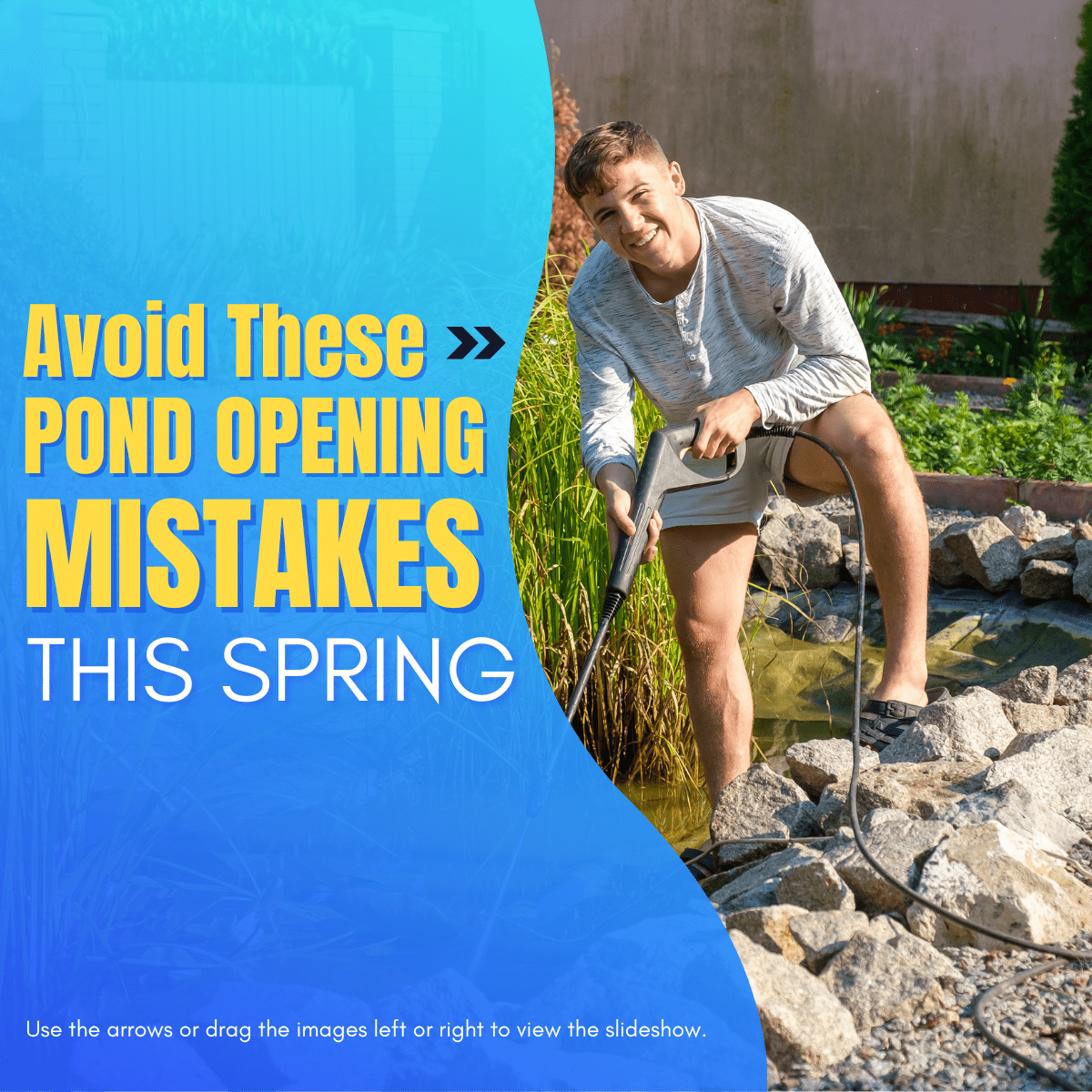
Opening your pond in spring sounds pretty simple, right? And really it is. But a few common mistakes can quickly turn it into a headache later on. From feeding fish too soon to skipping a partial water change, these missteps can mess up your pond’s health and leave you scrambling to fix it. Don’t let that happen to you!
Here are the top mistakes that I've seen over the years and how to avoid them so your pond can thrive this season.
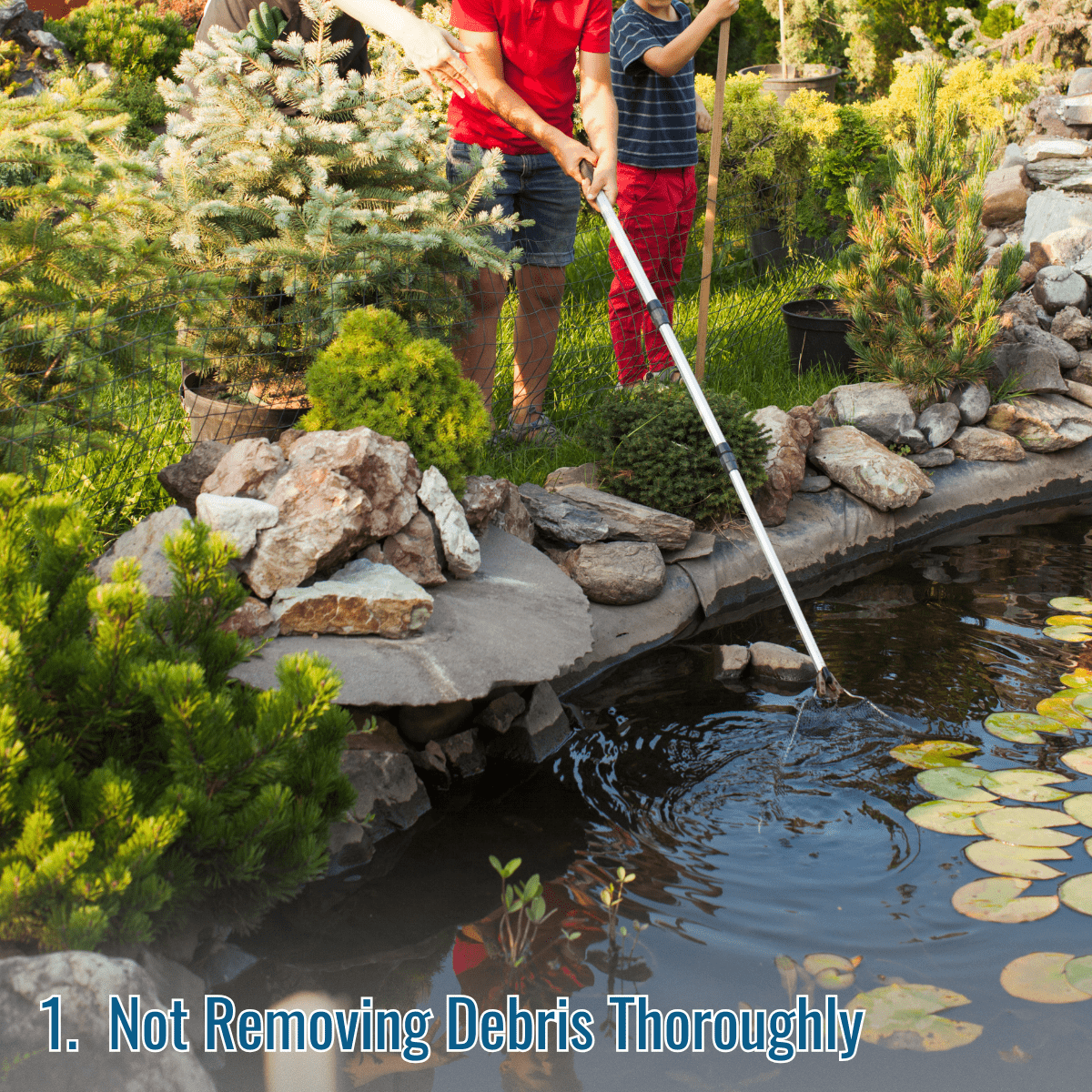
- Mistake: Leaving leaves, twigs, and other debris in the pond.
- Why It's a Problem: As debris decomposes, it releases harmful substances like ammonia and increases nutrient levels, which can trigger algae blooms. It also clogs pumps and filters, reducing their efficiency.
- How to Avoid: Use a skimmer net or pond vacuum to clean the pond bottom and surface thoroughly. Remove all visible debris before restarting your equipment to prevent future buildup.
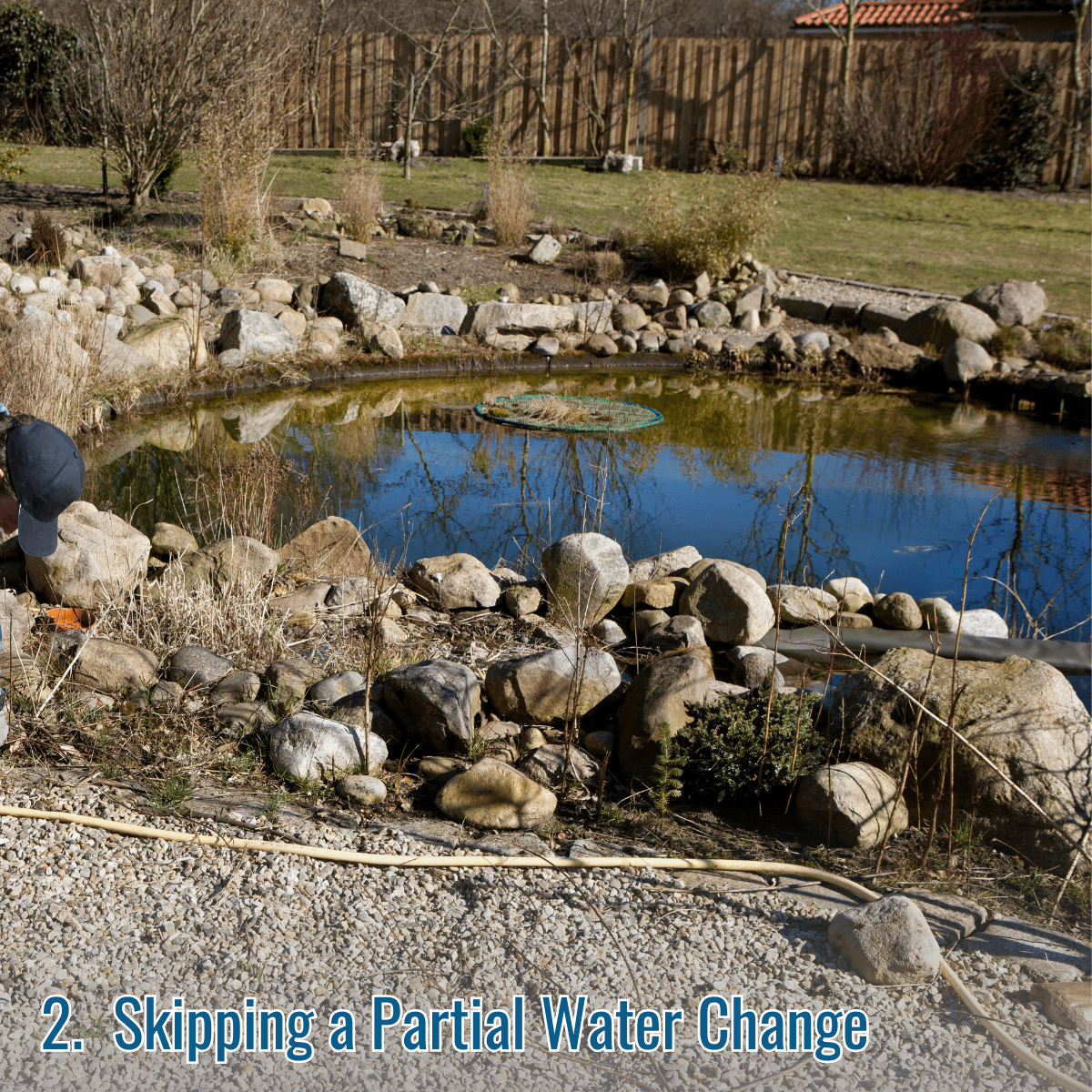
- Mistake: Failing to replace old pond water with fresh water during spring cleanup.
- Why It's a Problem: Over winter, water can accumulate toxins like nitrates and phosphates, which harm fish and promote algae growth. These conditions also make it harder for beneficial bacteria to thrive.
- How to Avoid: Drain and replace 25–50% of the water using a hose with a dechlorinator attached. This refreshes the pond while keeping enough old water to retain beneficial bacteria.
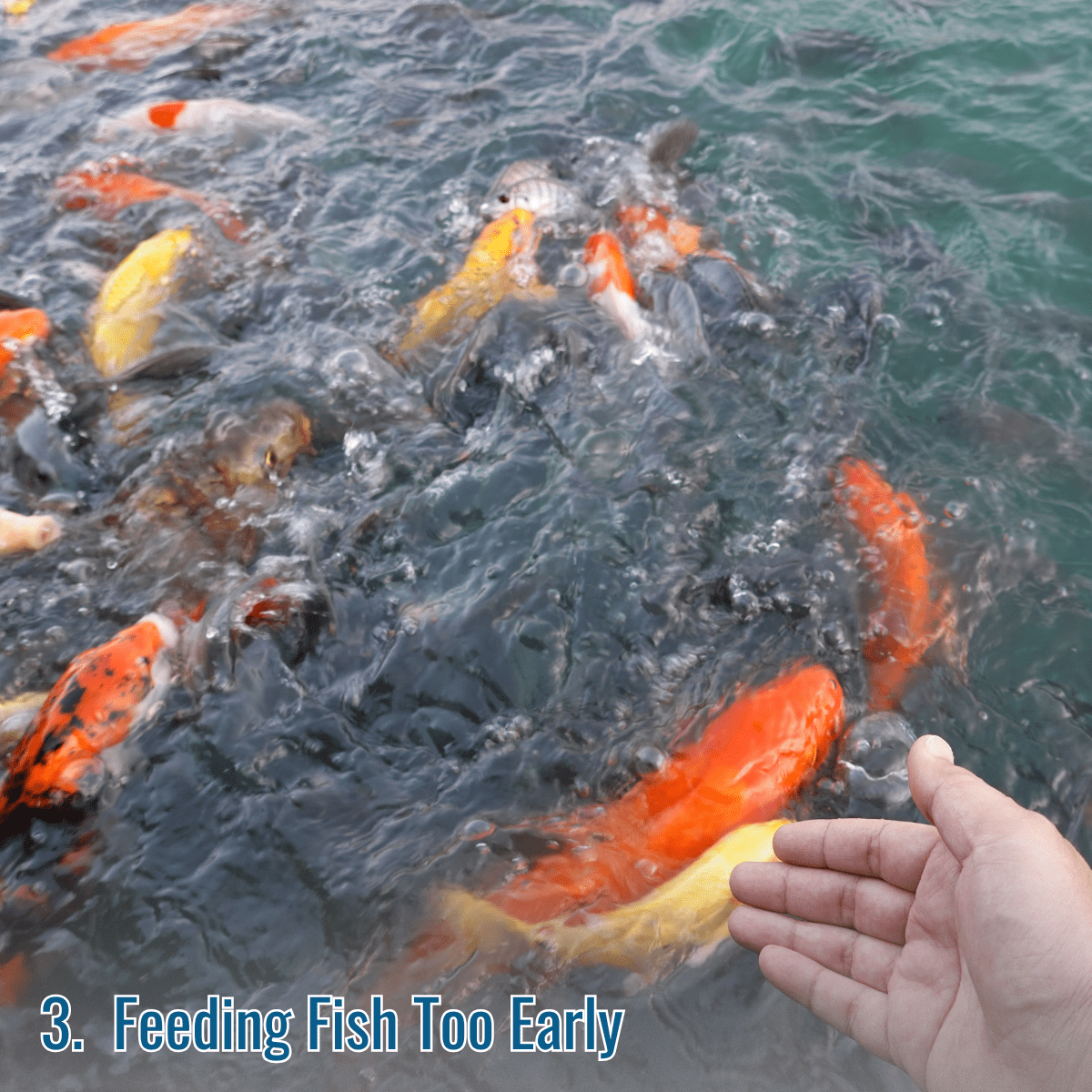
- Mistake: Feeding fish when the water temperature is below 50°F.
- Why It's a Problem: Fish digestion slows significantly in cold water, meaning they can't process food properly. Uneaten food decomposes, creating waste that harms water quality and stresses fish.
- How to Avoid: Wait until water temperatures consistently exceed 40°F before feeding. See our guide on when you should start feeding fish after winter for some important tips.
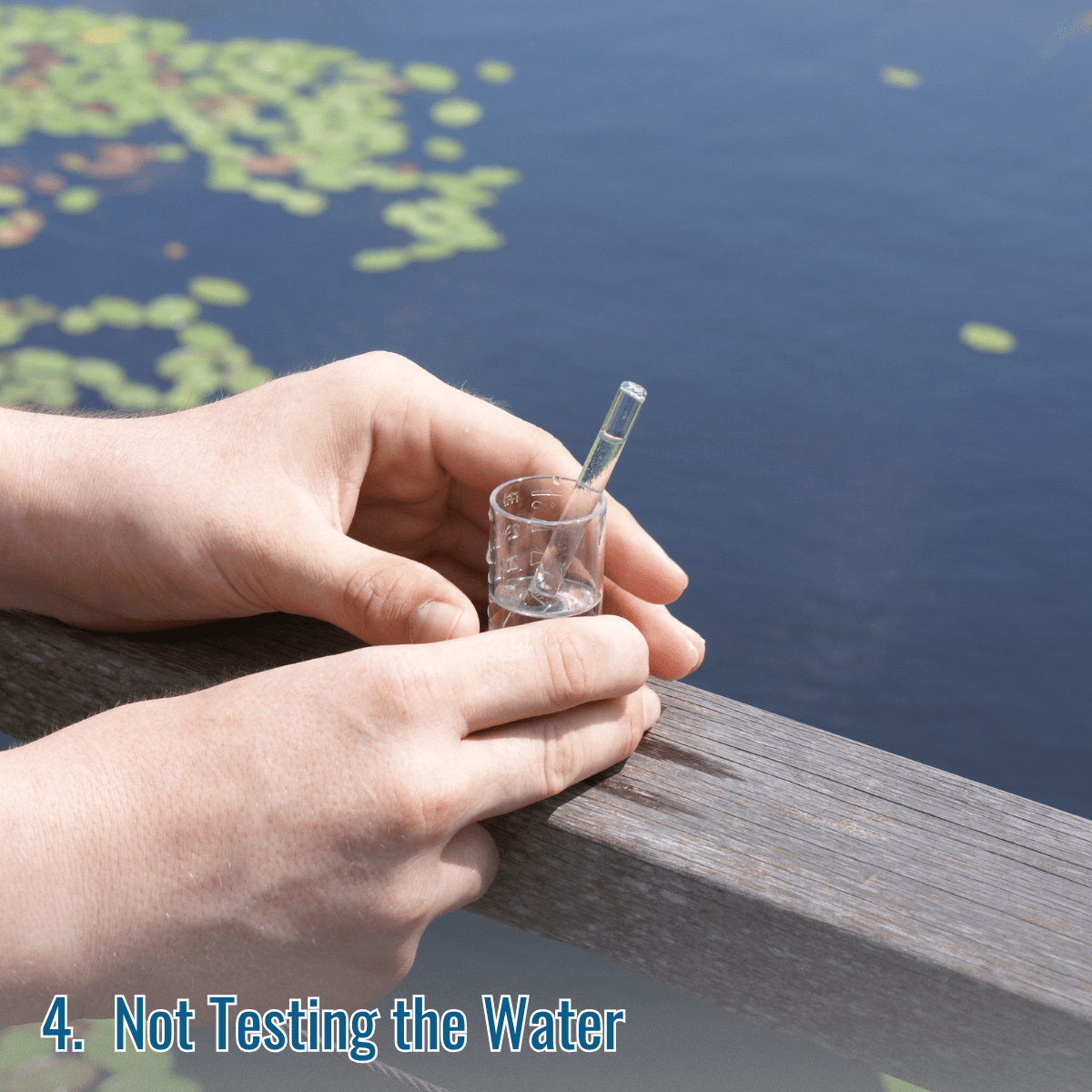
- Mistake: Skipping water quality testing when opening the pond.
- Why It's a Problem: Water parameters like pH, ammonia, nitrites, and nitrates can shift during winter. High ammonia or nitrites can be toxic to fish, while imbalanced pH can stress both plants and fish.
- How to Avoid: Use a reliable test kit to check all water parameters. Address any issues with pond treatments, such as ammonia neutralizers or pH balancers, to create a safe environment for fish and plants.
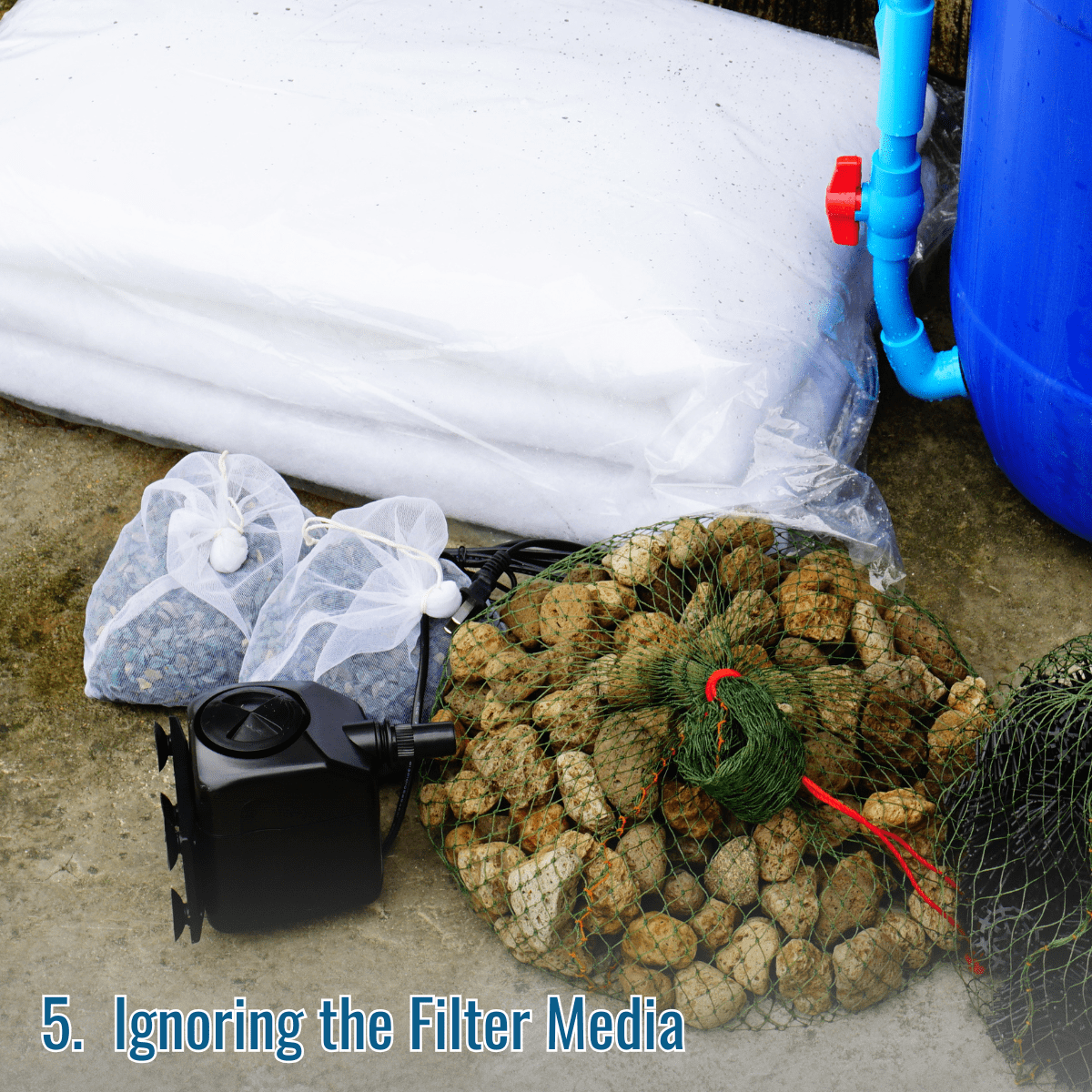
- Mistake: Restarting the system without cleaning or replacing filter media.
- Why It's a Problem: Clogged or dirty filter media restricts water flow and reduces the effectiveness of filtration, leading to poor water circulation and reduced oxygen levels.
- How to Avoid: Rinse filter media gently with pond water to preserve beneficial bacteria. If the media is heavily damaged or overly clogged, replace it with new filter media.
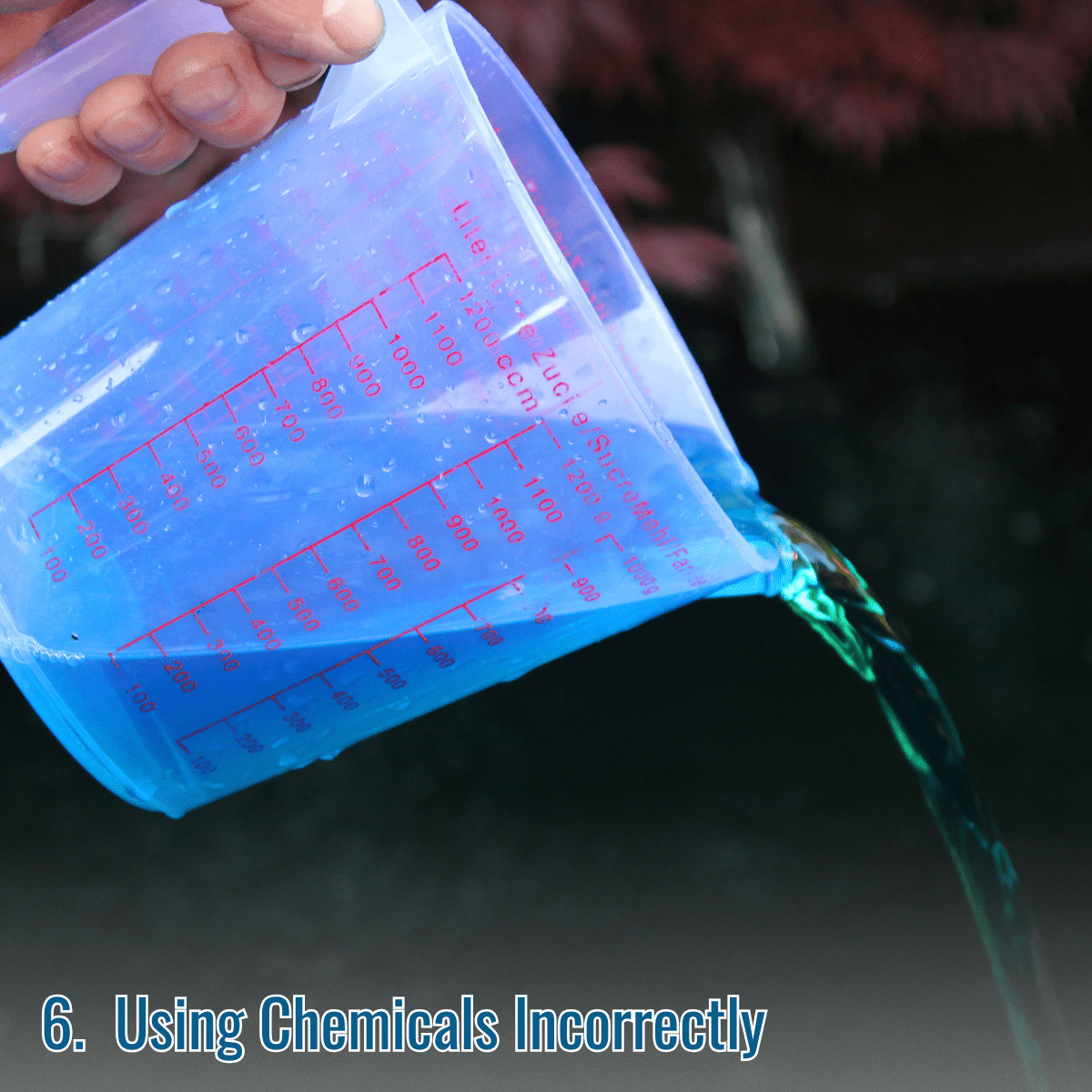
- Mistake: Overusing or misapplying pond treatments like algaecides or dechlorinators.
- Why It's a Problem: Too much chemical can disrupt the natural balance of the pond, harm fish and plants, or kill beneficial bacteria. Misuse can also create new issues, like oxygen depletion from dead algae.
- How to Avoid: Always measure treatments carefully and follow the instructions on the label. Apply treatments in smaller doses if you're unsure, and monitor the pond after use to see how it responds.
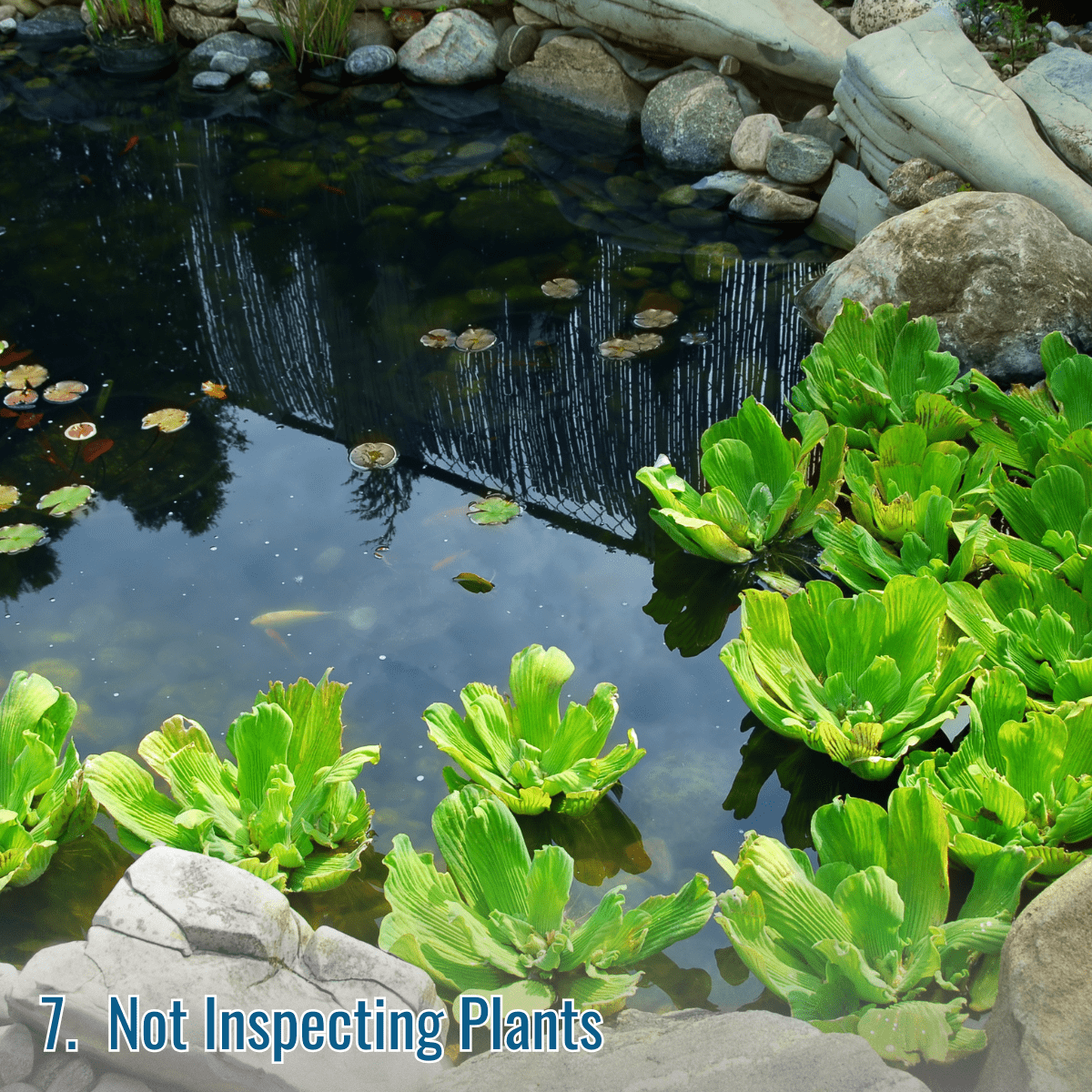
- Mistake: Forgetting to check and care for aquatic plants during spring cleanup.
- Why It's a Problem: Dead or decaying plant material can rot, releasing nutrients that encourage algae growth. Overgrown plants can also block sunlight and limit oxygen levels in the pond.
- How to Avoid: Trim back any dead or damaged foliage and remove decaying plant matter. Reposition or repot plants as needed to give them space to grow and to maintain balance in the pond.



